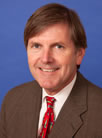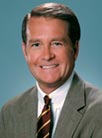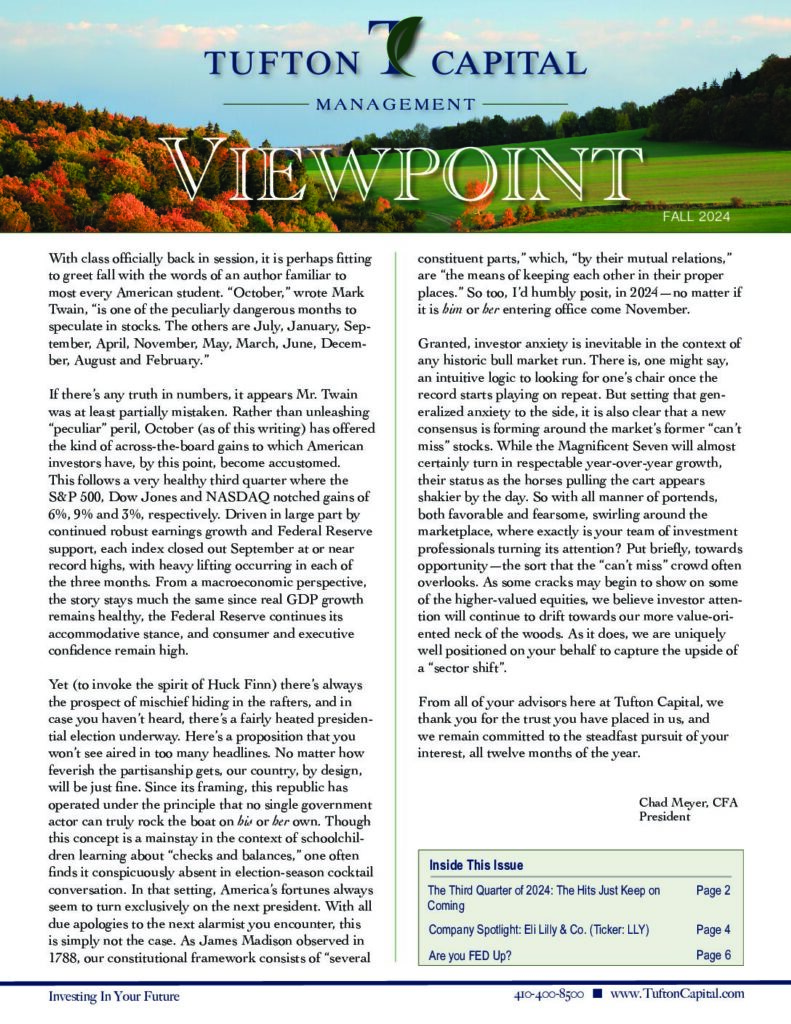 The first quarter of 2011 was dominated by a series of events that eclipsed the financial markets as front-page news. An unexpected breakdown in the political order in North Africa spread throughout the Mideast, and several governments important to Western economic interests tottered on the brink of collapse by quarter’s end. Governments in Tunisia and Egypt fell and significant unrest spread to Bahrain, a small but important financial center responsible for the coordination of Middle Eastern oil settlements. We were surprised that by quarter’s end a Western coalition had begun offensive air operations against the repressive government of Libya and, under the supervision of NATO, the West was attempting to bring down the government of Muammar Gaddafi, the long-running leader of Libya.
The first quarter of 2011 was dominated by a series of events that eclipsed the financial markets as front-page news. An unexpected breakdown in the political order in North Africa spread throughout the Mideast, and several governments important to Western economic interests tottered on the brink of collapse by quarter’s end. Governments in Tunisia and Egypt fell and significant unrest spread to Bahrain, a small but important financial center responsible for the coordination of Middle Eastern oil settlements. We were surprised that by quarter’s end a Western coalition had begun offensive air operations against the repressive government of Libya and, under the supervision of NATO, the West was attempting to bring down the government of Muammar Gaddafi, the long-running leader of Libya.
The European banking system came under pressure as banks in Portugal, Greece, Italy, and Spain joined those of Iceland and Ireland in experiencing varying degrees of loss of confidence by depositors and members of the European Union. France and Germany, the wealthy nations in the E.U., although willing to aid the affected nations, offered bailout terms that were quite steep. At quarter’s end, the E.U. banking situation remained unresolved. (more…)
 This summer marks my thirtieth anniversary in the financial service industry, beginning at the old Maryland National Bank and ultimately as a senior executive at Ferris, Baker Watts. These two proud institutions, along with countless others, became victims to the ever changing landscape of the industry. Today, “Wall Street” and, in fact, the world’s financial system are dominated by comparatively few investment factories that offer every conceivable alternative investment and access to capital that was unthinkable thirty years ago. Such “progress” has paralleled the dynamic growth of the whole economy and contributed to the advances in our standard of living. Although it would be difficult to argue that we haven’t progressed, does that mean that we have greater clarity about the future? Has innovation and sophistication led to superior investment performance? Are the financial decisions we face any simpler or easier? The answer to these questions is a resounding no.
This summer marks my thirtieth anniversary in the financial service industry, beginning at the old Maryland National Bank and ultimately as a senior executive at Ferris, Baker Watts. These two proud institutions, along with countless others, became victims to the ever changing landscape of the industry. Today, “Wall Street” and, in fact, the world’s financial system are dominated by comparatively few investment factories that offer every conceivable alternative investment and access to capital that was unthinkable thirty years ago. Such “progress” has paralleled the dynamic growth of the whole economy and contributed to the advances in our standard of living. Although it would be difficult to argue that we haven’t progressed, does that mean that we have greater clarity about the future? Has innovation and sophistication led to superior investment performance? Are the financial decisions we face any simpler or easier? The answer to these questions is a resounding no.
Placing client interests first is the critical challenge in our industry. (more…)
 The economy and the financial markets performed well in the fourth quarter and for the full year 2010. The Standard and Poor’s 500 index increased 10.49% in the quarter and 14.79% for the full year, somewhat above the long-run average return for common stocks since records were established in 1926. Bonds also delivered positive returns, and the 10-year and 30-year treasuries provided returns of 7.9% and 8.7%, respectively.
The economy and the financial markets performed well in the fourth quarter and for the full year 2010. The Standard and Poor’s 500 index increased 10.49% in the quarter and 14.79% for the full year, somewhat above the long-run average return for common stocks since records were established in 1926. Bonds also delivered positive returns, and the 10-year and 30-year treasuries provided returns of 7.9% and 8.7%, respectively.
But in the fourth quarter of 2010, there was a significant divergence in the performance of stocks vs. bonds. The sharp fourth-quarter advance in stocks (10.49%) was not matched by treasury returns. In the final quarter of 2010, the ten-year treasury fell 5.6% and the thirty-year treasury declined 9.8%. The bond market appears to be reacting to a sharp rise in the projected fiscal 2011 federal deficit of $1.27 trillion ($1,270 billion), up from $480 billion in fiscal 2009. Calls for spending cuts, repeal of the health care program, and a contentious debate over increasing the government debt ceiling may have temporarily spooked the bond market. (more…)
 Pssst… if ever you have the chance to hear Stuart Varney speak, grab it! Emblematic of the “coat hangers” in our respective mouths, wife Kirby and I were presented that opportunity back in November by way of The Fund for American Studies’ 2010 Leadership Network.
Pssst… if ever you have the chance to hear Stuart Varney speak, grab it! Emblematic of the “coat hangers” in our respective mouths, wife Kirby and I were presented that opportunity back in November by way of The Fund for American Studies’ 2010 Leadership Network.
For those unfamiliar with the gentleman, he may be found daily serving as the anchor of Fox Business News’ morning show, Varney & Company… for those of you groaning at the mere mention of the word Fox, relax, Stuart has logged time with both CNN and CNBC. In fact, with Larry King’s recent retirement, Varney may be the dean of cable news hosts, having joined CNN’s Manhattan bureau at its genesis back in 1980. A graduate of the London School of Economics, his coverage of the 1987 stock market crash earned him the coveted Peabody Award for excellence in journalism. (more…)
 The third quarter of 2010 was a remarkable one for stocks and bonds. As is rarely the case, both performed exceptionally well. We do not anticipate this unusual trend will continue much longer. It is, however, very nice to have both major components of our clients’ portfolios performing so well at the same time.
The third quarter of 2010 was a remarkable one for stocks and bonds. As is rarely the case, both performed exceptionally well. We do not anticipate this unusual trend will continue much longer. It is, however, very nice to have both major components of our clients’ portfolios performing so well at the same time.
A major reason for the strong quarter in stocks was the shift in the consensus view of the economy. In the beginning of the quarter, most pundits (not us, I might add) were calling for a “double-dip” recession. This was a step backwards for the market. By the end of August, that view began to shift towards our belief that the economy would avoid another recession. Clearly, two steps forward. Sentiment shifted because the economic data overall began to turn slightly more positive. With this shift in sentiment, the market rallied. By the end of the quarter, the Dow Jones Industrial Average was almost back to 11,000. (more…)
One, two, three, four…
Hrmm!
One, two, (one, two, three, four!)
1966… The Beatles—most of my partners are way too young to remember the phenomenon they were, and the others were on to more serious things. For those of you of a certain age though, do you remember the song to which that count was the opening?
Let me tell you how it will be;
There’s one for you, nineteen for me.
‘Cause I’m the taxman,
Yeah, I’m the taxman. (more…)
The second quarter was punctuated by two major crises: the European financial crisis and the BP oil disaster. Both dramatically affected the market and both arguably had very little impact on our economy. When we look beyond these two headline-grabbing events, we see a continuation of the economic recovery. This market downturn should prove to be a buying opportunity. (more…)
Investment Income—The Growing Problem
 With bond and money market yields near all-time lows, investors who are trying to generate income feel like they are swimming upstream. Until recently, investors could always count on the bond market to provide them with a steady stream of consistent income. Yields were reasonably competitive, which made it easier for investors to live off of their investment income. The U. S. financial crisis and subsequent recession pushed interest rates to historically low levels.
With bond and money market yields near all-time lows, investors who are trying to generate income feel like they are swimming upstream. Until recently, investors could always count on the bond market to provide them with a steady stream of consistent income. Yields were reasonably competitive, which made it easier for investors to live off of their investment income. The U. S. financial crisis and subsequent recession pushed interest rates to historically low levels.
During this difficult period, however, investors could still manage to find competitive yields, as risk was still rampant. For example, there was a period of time in late 2008 and early 2009 when the consensus view was that municipalities would default on their obligations. Yields spiked to very attractive levels as hedge funds dumped their municipal bonds. Also, corporate bonds maintained high yields throughout the crisis as they were considered very risky. The spread between corporate yields and Treasury yields reached an all-time high.
With the economic recovery, the perceived risk of both corporate and municipal bonds has fallen dramatically. Thus, their yields are now in line with historical levels versus Treasury yields. For the first time in 50 years, many companies’ bonds are yielding less than their common stock. With bond yields at record lows and money market rates near zero, investors are facing the unappealing proposition of replacing their maturing 5% coupon bonds with new bonds yielding 3% or less.
Simply put, after years of growing income streams, investors’ income generated by bonds and money market funds is being systematically reduced. But what can investors do to fix this problem? The answer may lie in the equity market. Diversified stock portfolios can be constructed with yields in excess of 4%. Because of the recent correction combined with companies’ willingness to increase dividends, stock yields have increased. We are not proponents of making a huge asset allocation shift, but are in favor of shifting some money from bonds to high yielding stocks to increase the portfolio’s income. Taking this action may allow investors to swim with the income current instead of against it.
—Dave Stepherson
 The U.S. economy has continued the recovery that began late in 2009. We expect first quarter 2010 growth to be around 3.5%. The recovery is currently being stimulated by improvements in manufacturing, specifically automobiles, as well as a general rebuilding of inventories throughout the economy. Inventories declined as much as 15% at the trough of the recession. First quarter economic results will be adversely affected by the awful weather conditions that affected the entire northern half of the United States, but we believe the next step in the recovery will be in the housing sector and should occur this spring.
The U.S. economy has continued the recovery that began late in 2009. We expect first quarter 2010 growth to be around 3.5%. The recovery is currently being stimulated by improvements in manufacturing, specifically automobiles, as well as a general rebuilding of inventories throughout the economy. Inventories declined as much as 15% at the trough of the recession. First quarter economic results will be adversely affected by the awful weather conditions that affected the entire northern half of the United States, but we believe the next step in the recovery will be in the housing sector and should occur this spring.
Representing about 10% of the economy, housing is influenced by seasonal economic adjustments that, by reason of the weather, sent confusing signals. Existing home sales are at an annual rate of 5,020,000 units, up from a low of 4,610,000 in the second quarter of 2009. Though still below optimal levels, we remain optimistic, as low mortgage rates (about 5% for a 30-year fixed rate) should continue to stimulate housing demand. In addition, the home buyer’s tax credit, which expires in April, continues to help. Hopefully, the second quarter, which is typically a much stronger quarter for housing, will lead to a growing consensus that the recovery is gaining momentum. (more…)
 Upon picking up my oldest children at BWI for Easter Weekend, it was with some amusement that I listened to both complain on the way home about the amount they were paying in taxes. Proving the apple falls not far from the tree, the oldest son’s observation remains unprintable—let’s just say that the visual equivalent might be akin to sharing one bunk with 3 inmates at the Fallsway Apartments, aka the Baltimore City Jail.
Upon picking up my oldest children at BWI for Easter Weekend, it was with some amusement that I listened to both complain on the way home about the amount they were paying in taxes. Proving the apple falls not far from the tree, the oldest son’s observation remains unprintable—let’s just say that the visual equivalent might be akin to sharing one bunk with 3 inmates at the Fallsway Apartments, aka the Baltimore City Jail.
With recent developments emanating from the Augean Stables 35 miles south of here, that inmate number is likely to increase exponentially. In fact, if Einstein is to be believed—the definition of insanity is doing the same thing over and over again and expecting different results—some might conclude the inmates are running the asylum. And if the notion of Einstein intimidates, a highly recommended alternative would be F.A. Hayek’s The Road to Serfdom. But I digress…
Quite simply, we are on an unsustainable path. Matthew Continetti, Associate Editor of The Weekly Standard, had this to say in the lead editorial of magazine’s March 15, 2010 issue:
As it stands, Social Security, Medicare, Medicaid, and debt service constitute more than 60 percent of all government expenditure. The number is set to rise more than 75 percent within a decade. Left unchecked, these four items will consume the entire federal budget by midcentury.
American Enterprise Institute scholar Andrew Biggs estimates the federal government would have to impose an immediate and permanent 30 percent increase on every tax in order to balance its books—in 25 years.
 The 4th quarter was another good one for the stock market, marking its third consecutive advance. As a leading indicator for the economy, the market is signaling investors the recovery is real. Where there are still plenty of skeptics, it would appear to us the improving economic data is forming a base upon which a meaningful, sustainable economic recovery can occur.
The 4th quarter was another good one for the stock market, marking its third consecutive advance. As a leading indicator for the economy, the market is signaling investors the recovery is real. Where there are still plenty of skeptics, it would appear to us the improving economic data is forming a base upon which a meaningful, sustainable economic recovery can occur.
For the quarter, the S&P 500 returned 6.01%. You may recall the 2nd and 3rd quarters returned 15.94% and 15.56%, respectively. From the index’s trough on March 9, 2009, the S&P 500 has returned 67.8%, one of the strongest nine-month periods in the history of the index. The Dow Jones Industrial Average returned 59.8% over the same time period. For the full year 2009, the S&P 500, Dow and Nasdaq returned 26.50%, 22.60% and 43.91%, respectively. After an abysmal 2008, these results were well-received.
As the stock market began its recovery, the bond market moved in the opposite direction. In the first half of 2009, we saw interest rates move to historic lows as the government continued to work to grease the skids of the credit markets. As these programs began to have a positive effect, interest rates began moving higher. By the end of the year, those rates were much higher. The 10-year Treasury started 2009 yielding 2.20% and ended it yielding 3.79%. As you will recall, when yields rise, bond prices fall. Most Treasuries provided investors with a negative return for the year. Because of the perceived risks in Corporate and Municipal bonds during the year, their yields did not drop as much. The result for investors was that bonds produced positive returns for the year. The Barclays Corporate Index returned 5.24% for the year and the Barclay’s Municipal Index returned 7.61%. (more…)
 Our 4th quarter letter always presents a bit of a conundrum—it’s the end-of-year issue, yet typically being written as the New Year commences. And that brain-teaser is further amplified by this, our 2009 edition… is it the end of the decade, or do we have another year to go? Here’s one vote for it being the end of the 00’s decade, which certainly lived up to its moniker when viewed through the prism of investment results.
Our 4th quarter letter always presents a bit of a conundrum—it’s the end-of-year issue, yet typically being written as the New Year commences. And that brain-teaser is further amplified by this, our 2009 edition… is it the end of the decade, or do we have another year to go? Here’s one vote for it being the end of the 00’s decade, which certainly lived up to its moniker when viewed through the prism of investment results.
The writer was reminded of an earlier piece, penned back in the 2nd quarter of 2006, at which time there were indications that the “00’s were shaping up to be the worst decade since the 30’s,” according to Ed Hyman of International Strategy & Investment. Well, with the results almost in by December 20, 2009, Tom Lauricella of WSJ.com felt confident enough to lead with this sub-header: “Since End of 1999, U.S. Stocks’ Performance Has Been the All-Time Clunker; Even 1930s Beat It.” Lauricella further notes that, “Many financial plans assume a 10% annual return for stocks over the long term, but over the last 20 years, the S&P 500 is registering 8.2%.” (more…)
 The domestic economy most likely turned up in the third quarter of 2009, abating fears of a major economic depression. Seven of the ten leading indicators are now positively contributing to the Index of Leading Economic Indicators. The economic dislocations of 2007 and 2008 are receding. One of the leading indicators, the S&P 500 Index, delivered another very strong quarter, making it two consecutive double-digit percentage increases. The S&P rose 15.6%, the Dow was up 15.7% and the NASDAQ jumped 15.7%. Last quarter, these indexes increased 15.9%, 11.9% and 20.0%, respectively. These results are the best quarterly returns in a decade. Even after this tremendous run, the S&P 500 is still almost 15% below the level experienced when Lehman Brothers declared bankruptcy on September 15, 2008. (more…)
The domestic economy most likely turned up in the third quarter of 2009, abating fears of a major economic depression. Seven of the ten leading indicators are now positively contributing to the Index of Leading Economic Indicators. The economic dislocations of 2007 and 2008 are receding. One of the leading indicators, the S&P 500 Index, delivered another very strong quarter, making it two consecutive double-digit percentage increases. The S&P rose 15.6%, the Dow was up 15.7% and the NASDAQ jumped 15.7%. Last quarter, these indexes increased 15.9%, 11.9% and 20.0%, respectively. These results are the best quarterly returns in a decade. Even after this tremendous run, the S&P 500 is still almost 15% below the level experienced when Lehman Brothers declared bankruptcy on September 15, 2008. (more…)
 Hardesty Horizons is now in its 10th year of publication, which means there have been roughly 40 opportunities to face a blank palette and put words to paper. That large sigh of relief resulting from the completion of another communiqué, is quickly followed by the fear and trepidation of what to come up with next. Unlike the other entries which appear, The French Quarter is not a ”set” piece, nor was it ever intended as such… the raison d’etre—as the ”sales & marketing arm” of Hardesty Capital Management, so to speak—is nothing more than a ”shout out,” as the au courant phrase goes, an attempt to avoid being ”outta sight, outta mind.” And implicit therein, the goal might be to provoke or entertain, not leave indifferent (b/t/w, for those keeping count, the French tongue has been employed three times so far, justifying the byline…). (more…)
Hardesty Horizons is now in its 10th year of publication, which means there have been roughly 40 opportunities to face a blank palette and put words to paper. That large sigh of relief resulting from the completion of another communiqué, is quickly followed by the fear and trepidation of what to come up with next. Unlike the other entries which appear, The French Quarter is not a ”set” piece, nor was it ever intended as such… the raison d’etre—as the ”sales & marketing arm” of Hardesty Capital Management, so to speak—is nothing more than a ”shout out,” as the au courant phrase goes, an attempt to avoid being ”outta sight, outta mind.” And implicit therein, the goal might be to provoke or entertain, not leave indifferent (b/t/w, for those keeping count, the French tongue has been employed three times so far, justifying the byline…). (more…)
 After reading William Cohan’s book “House of Cards,” I was taken aback by the level of greed that has tarnished respected financial institutions. Greed turned them into financial casinos where executive compensation levels became an overriding corporate objective. This excess is wrong and, just as the excesses of Drexel Burnham in the late 1980’s were corrected, today’s unwarranted and unnecessary compensation levels will eventually return to some form of sanity and normalcy.
After reading William Cohan’s book “House of Cards,” I was taken aback by the level of greed that has tarnished respected financial institutions. Greed turned them into financial casinos where executive compensation levels became an overriding corporate objective. This excess is wrong and, just as the excesses of Drexel Burnham in the late 1980’s were corrected, today’s unwarranted and unnecessary compensation levels will eventually return to some form of sanity and normalcy.
Greed was not restricted to the corporate suites of managements across the country. Unfortunately, more financial thievery was exposed this quarter as the public confidence in the U. S. financial markets had to withstand another indictment. Just as the Madoff case came to an end with a 150 year sentence, Mr. R. Allen Stanford, a Houston based financier, who operated significant offshore tax havens, was indicted. To our delight, the sheriff is here, and hopefully those that have abused the financial structure of our economy will be awarded a full measure of the prison sentences and fines they deserve. This is a precondition for restoring investor confidence, which should result in more normal equity valuations. “Normalcy” could equate to more than 50% above current stock prices. (See the Schopf Stop for more on this.) (more…)



